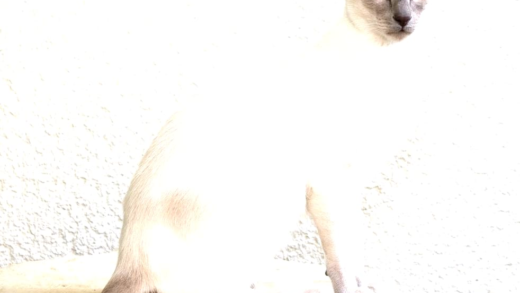This article highlights essential aspects of cat dental health, including signs of dental issues, pain identification, causes, prevention strategies, treatment options, safe home care, dietary recommendations, and the importance of routine veterinary check-ups.
Recognizing Signs of Tooth and Gum Disease
Cat dental health is crucial for their overall well-being. Early recognition of tooth and gum disease can save your cat from unnecessary pain and extensive treatments. Some common signs to watch for include:
- Bad Breath: A foul odor coming from your cat’s mouth may indicate dental issues.
- Difficulty Eating: If your cat hesitates or struggles to eat, it might be due to dental pain.
- Swollen Gums: Red or inflamed gums are a clear sign of gum disease.
- Excessive Drooling: Cats with dental problems may drool more than usual.
- Behavioral Changes: If your normally playful cat becomes withdrawn, it might be in pain.
Monitoring these signs can help catch dental issues early. Regular vet check-ups are essential for maintaining your cat’s dental health.
Identifying Pain in Your Cat
Understanding how to tell if your cat is in pain from dental issues is important. Cats are known for hiding their discomfort, making it challenging for owners. Look for these practical indicators:
- Changes in Eating Habits: Reluctance to eat or favoring soft food may signal pain.
- Grooming Changes: Cats in pain might neglect grooming or focus on specific areas.
- Vocalization: Increased meowing or growling when eating can indicate discomfort.
- Facial Expressions: A tense face or squinting eyes can suggest your cat is in pain.
If you notice these signs, it is crucial to consult your veterinarian promptly.
Understanding the Causes of Dental Issues
To effectively maintain cat dental health, it is essential to understand the underlying causes of tooth and gum disease. Common factors include:
- Poor Oral Hygiene: Inadequate dental care leads to plaque and tartar buildup.
- Diet: A diet high in carbohydrates can contribute to dental problems.
- Genetics: Some breeds are more prone to dental diseases than others.
- Age: Older cats are more susceptible to dental issues due to wear and tear.
Regular dental care and a balanced diet can help prevent these issues from arising.
Preventing Dental Problems
Cat dental health is essential, and preventing dental problems can save your feline friend from pain and costly treatments. Here are some simple tips to keep your cat’s teeth healthy:
- Regular Brushing: Brush your cat’s teeth several times a week. Use a toothbrush and toothpaste specifically designed for cats.
- Dental Treats: Offer dental chews or treats that help reduce plaque and tartar buildup. Look for products with the Veterinary Oral Health Council (VOHC) seal.
- Water Additives: Consider adding dental water additives to your cat’s drinking water. These can help reduce bacteria and plaque.
- Healthy Diet: Feed a balanced diet with dry food that promotes dental health. High-quality kibble can help scrub teeth as your cat chews.
- Routine Vet Visits: Schedule regular veterinary check-ups for professional cleanings and assessments of your cat’s dental health.
Incorporating these practices into your cat’s routine will significantly reduce the risk of dental diseases.
Treatment Options Available
When it comes to treating dental diseases in cats, several options are available. Depending on the severity of the issue, your veterinarian may recommend:
- Professional Cleaning: This involves a thorough cleaning under anesthesia to remove plaque and tartar buildup.
- Extractions: In cases of severe gum disease or damaged teeth, extractions may be necessary to alleviate pain.
- Medications: Your vet may prescribe antibiotics or anti-inflammatory medications to manage infections and pain.
- Dental Sealants: These can be applied to protect your cat’s teeth from plaque buildup.
- Home Care Products: Your vet might suggest specific dental care products that can be used at home to maintain dental health.
Each treatment plan should be tailored to your cat’s specific needs, so discussing options with your veterinarian is crucial.
Safe Home Dental Care
Cleaning your cat’s teeth at home is vital for maintaining cat dental health. Here are steps to do it safely and effectively:
- Start Slowly: Introduce your cat to tooth brushing gradually. Let them sniff the toothbrush and toothpaste first.
- Use the Right Tools: Use a soft-bristled toothbrush and toothpaste formulated for cats.
- Gentle Technique: Brush in small circular motions, focusing on the outer surfaces of the teeth. Be gentle to avoid hurting your cat.
- Make it Positive: Reward your cat with treats or praise after each brushing session to create a positive association.
- Be Consistent: Aim to brush your cat’s teeth several times a week to maintain oral hygiene.
With patience and consistency, you can make dental care a part of your cat’s routine without stress.
When to Visit the Vet
Knowing when to take your cat to the vet for dental issues is crucial for preventing serious health problems. Signs that indicate it’s time for a veterinary visit include:
- Persistent Bad Breath: If your cat’s bad breath continues despite regular dental care, it could signify an underlying issue.
- Visible Swelling: Any swelling around the mouth or jaw should prompt a veterinary check-up.
- Excessive Drooling: If your cat is drooling excessively, it may be a sign of pain or dental disease.
- Refusal to Eat: A sudden change in eating habits, especially if your cat refuses food or has difficulty chewing, is a red flag.
- Behavioral Changes: Increased aggression or withdrawal can indicate discomfort or pain.
Prompt veterinary care can help address dental problems before they escalate into more serious conditions.
Dietary Changes for Better Dental Health
Diet plays a significant role in maintaining cat dental health. Making simple dietary changes can greatly improve your cat’s dental condition. Consider incorporating:
- Dry Food: Kibble can help scrub your cat’s teeth as they chew, reducing plaque buildup.
- Dental Treats: Look for treats designed to promote dental health, often endorsed by veterinary associations.
- Raw Vegetables: Small pieces of carrots or green beans can serve as crunchy snacks that may help clean teeth.
- Water Additives: Dental water additives can reduce plaque and bacteria in your cat’s mouth.
- Regular Feeding Schedule: Consistent feeding times can help maintain your cat’s oral hygiene and overall health.
Changing your cat’s diet can be a straightforward way to enhance their dental health and prevent future issues.
Recommended Dental Products
Using specific dental products can greatly benefit your cat’s dental health. Some recommended products include:
- Toothbrush and Toothpaste: Use brushes and toothpaste formulated specifically for cats. Never use human toothpaste.
- Dental Chews: Chews approved by veterinary dental organizations can help control plaque.
- Water Additives: Products that you can add to your cat’s water to help combat bacteria.
- Oral Gels or Sprays: These can help reduce plaque buildup and freshen breath.
- Dental Toys: Special toys that promote chewing can aid in cleaning teeth while providing entertainment.
Investing in these products can support your cat’s dental hygiene and overall health.
Routine Vet Check-ups
Regular veterinary check-ups are essential for monitoring your cat’s dental health. Ideally, schedule a dental check-up at least once a year. During these visits, your vet will:
- Examine Teeth and Gums: Look for signs of decay, disease, or buildup.
- Perform Professional Cleanings: Remove tartar and plaque that home care might miss.
- Assess Overall Health: Check for any other health issues that might impact dental health.
- Provide Recommendations: Suggest specific dental products or changes to your cat’s care routine.
- Monitor Changes: Keep track of your cat’s dental health over time to spot any issues early.
Routine check-ups help ensure your cat maintains good dental health and overall wellness.



Comments are closed.